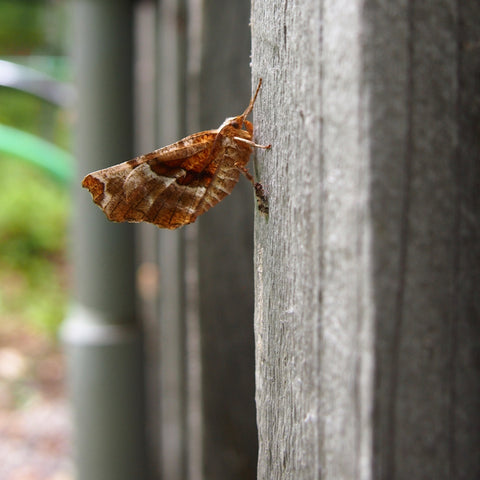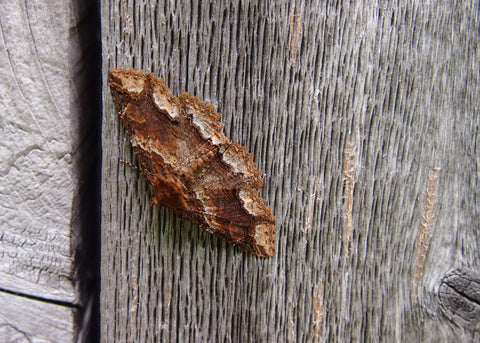
Maple for the holidays
November 28, 2021
We have been out stocking up businesses with Wayeeses Farms maple sugar and syrup, so if you are looking for a sweet gift or you want to bake or cook with maple check out these locations:
Morgan Country Store @morgancountrystorecafe sells Maple Syrup and Maple Sugar plus they cook with our syrup and sugar.
Cabot Farmers' Store in Waterbury Center sells Maple Sugar.
The Provisions Store at @jaypeakresort sells Maple Syrup and Maple Sugar.
Littleton Co-op @littleton_coop sells Maple Sugar and bulk maple sugar.

Buffalo Mountain Co-op @buffalomountaincoop in Hardwick sells bulk maple sugar.

Wolfpeach @wolfpeachvt makes truffles and other delicious items with our maple sugar and sells them at farmers markets in Burlington and Waterbury.
Nomad Coffee in South Burlington @nomadcoffeevt_ses and Essex @nomadcoffeevt sells Maple Syrup and uses it in your coffee drinks.
Woody's Mercantile @woodysmercantile in Woodstock sells Maple Syrup, Maple Sugar and Maple Rocks.

Pick and Shovel in Newport sells Maple Sugar and Maple Rocks.
Newport Natural Foods @newportnatural sells Maple Sugar.
Riverbend Market in Morrisville sells Maple Rocks.
Farmyard Store @thefarmyardstore in Derby sells Maple Sugar.
Jay Country Store @jaycountrystore802 sells Maple Sugar and Maple Rocks.
And of course, you can always order on wayeesesfarms.com for pickup at our farm or we will ship it to you.
If you need some inspiration for what to bake, check out these recipes on the Vermont Maple Sugar Makers website.

How we process the sap
April 23, 2021 1 Comment
|
In the previous blog, I discussed how we collect sap. This season we collected about 58,000 gallons of sap. We process the sap every day that we collect it. First we process it through a reverse osmosis machine that removes some of the water. The towers contain membranes. The sap is pumped through the membranes at high pressure and pure water is removed, The output is a more concentrated maple sap. |
 |
|
If you recall from the previous blog post, our raw sap was 1.6 Brix. This photo shows the concentrated sap that was output from the RO machine. It is 12.8 Brix, as measured on the refractometer. The Jones “Rule of 86” was devised in 1946 by C.H. Jones, a scientist and educator at the University of Vermont. The gist of the rule is that if one divides 86 by the sugar content of sap, you can estimate the amount of sap required to produce a gallon of syrup. The rule has been revised and the recommended dividend is now 88.2. |
 |
|
So it takes 55 gallons of raw 1.6 Brix sap to produce a gallon of syrup whereas it takes just 6.9 gallons of this concentrated 12.8 Brix sap to produce a gallon of syrup. So boiling concentrated sap is a huge savings in fuel and time. We cook our concentrated sap over a wood fire. Cooking over a wood fire is the traditional way of making maple syrup and it reduces our dependence on fossil fuels. Chad needs to stoke the fire about every 15 minutes. |
 |
|
The sap is cooked in a set of pans called an evaporator. Our back pan holds about 40 gallons and is covered to boil more efficiently. Clouds of steam rising from the sugar house show the water evaporating from the sap. More concentrated sap is automatically added to the back pan as water evaporates. Here Jim is monitoring the boil. |
 |
|
Our front pan is not covered, and it holds about 15 gallons. Here you can see the sticky bubbles. |
 |
|
When the syrup in the front pan reaches 66.9 Brix it is drawn off and filtered. Donna is drawing off finished syrup by opening the spigot. As syrup is drawn off the front pan more sweet from the back pan is automatically added to the front pan. |
 |

So the trees are all tapped, now what?
March 19, 2021
|
After a tree is tapped then the next step is in Mother Nature's hands. We wait for the temperatures to climb above freezing. When this happens, a pressure difference is created in the maple tree and sap drips out of each tap hole. The temperature needs to fall back below freezing and warm up again to keep the sap flowing. The sap flows down the 5/16th sap lines until it reaches a saddle, where the sap drops into a lateral main line to travel towards the sap tank. This photo shows Jim drilling the hole in the main line for a saddle. |
 |
| Our lateral main lines are connected to a pair of larger main lines. You can think of the 5/16th lines as the roads or lanes which lead to the paved county roads (lateral main lines) which intersect with the super highways (the bigger main lines.) The super highways are a pair of wet (green) line and dry (black) line. The hoop connecting the two lines at the intersection is used to increase the vacuum pulling on the lateral line. |  |
| We help the sap to move through the pipeline via a vacuum pump at the bottom of the lines which sucks on the lines. The dry or black line carries vacuum up the hill, and the green lines carry sap down the hill. Some people think that the vacuum pump is sucking sap from the trees, but it is really just sucking the sap away from the tap hole and through the lines. The sap is extracted from the lines into the sap tank via an extractor. |  |
| As you can see in the photos, sap looks like water. In fact, raw sap from our maple trees is typically between 1.5 and 2.5 Brix, whereas syrup must be 66.9 - 68.9 Brix. You can measure Brix with either a refractometer or a hydrometer. Stay tuned for the next post about how we transform raw sap into maple syrup! |  |

Tapping 2021
March 13, 2021
We have finished tapping our maple trees for the 2021 season. Did you know that you have to drill a fresh hole in the trunk of the maple tree every season and tap a spout in to catch the sap?
|
|
The purple arrow points to an older tap hole. A maple tree compartmentalizes or walls off any old tap holes or wounds, so sap no longer flows out of them. When you drill a new hole in a maple tree you want to locate it several inches left or right and about a foot above or below any old tap hole. This allows the maple tree to remain healthy and continue to grow even though it is tapped every year. The photo below shows the stained wood around a tap hole where the tree compartmentalized.
|
Here is a video showing the steps in tapping a tree.
Sometimes we have to add a little fun and competition when we have almost three thousand trees to get tapped.

The holidays are here...
December 09, 2020

If you are like me and procrastinate holiday shopping, then you woke up this morning and realized that Christmas is just two weeks away. I know that some folks have been decorating, buying gifts and baking for weeks now, but all I have done is hang a wreath on our front door.
We are here to help you out with your last minute holiday shopping. We have lots of sweet gifts that will fit anyone.
Grab one of our gift ideas and have it shipped for free. We offer:
- A syrup and pancake gift with an added treat of maple sugar crush to sprinkle on the pancakes as you are cooking them. These are packaged in a burlap bag and tied up with a gift card from you.

- A gift for the adventuresome cook or baker who likes to try new ingredients. This gift includes granulated maple sugar and maple sugar crush plus a cookbook with ideas on how to use them

- Maple syrup in a gingerbread person bottle for pouring on your morning cereal or into a cup of coffee or tea plus a bag of our Maple Rocks. Rocks are the biggest chunks from our maple sugar process and they are great to just put in your pocket and munch on anytime and any place

Or fill your shopping basket with all sorts of maple items from our product page and then come by the farm to pick them up or have us ship them.
Happy Holidays and be safe and well this holiday season.

Fall Foliage in the Sugarbush
October 02, 2020
Fall foliage season is a brief, bright time in northern Vermont, one last brilliant show of color before the leaves fall to the ground and the trees go dormant for the winter. Here are some of our favorites from 2020.
When you look at a hillside, the red and orange hues indicate the sugar maples.

The upper leaves change color before the lower leaves.





Berries and Maple
August 04, 2020
It's berry season in Vermont and berries and maple go well together.

Things that fly at night
May 31, 2020 3 Comments
We went to the sugarhouse today to get a drum of Dark syrup to bottle, and noticed that the motion detector light at our sap collection building was illuminated. We stopped to turn it off, and observed quite a collection of moths of all sizes and colors. We would like some help in identifying these nocturnal insects.






May on the forest floor
May 27, 2020
May is a good month to work on sap lines in the sugar bush. The leaves on the maple trees are not fully open so it is easy to see the contours of the land. Plus, when you look down, the forest floor is exploding with life. Here are a few of my favorites.
Spring Beauties,

Dutchman's Breeches,

Jack-in-the-Pulpit,

Red Trillium,

Trout Lily,

Ramps and Fiddleheads,
and the next generation of maple trees sprouting up everywhere.
Ramp season
May 10, 2020
Ramps or wild leeks are one of the first plants to start growing on the forest floor when the snow melts. They seem to really flourish below maple trees. You can dig these wild onions and eat the stem and the leaves. As always, when you are out foraging, ask the landowner for permission, and don't overpick. With leeks, it is important to leave the underground root in place so more will sprout.
|
|
 |
|
|
I like to make a pesto by pureeing the entire plant with olive oil and sea salt. In the jar on the right, I also added some sunflower seeds which helps to mellow the bite of the leeks. |
We also found this great recipe for Maple Pickled Ramps in Katie Webster's cookbook, titled "maple".

|
 |

The 2020 crop
April 21, 2020
There are lots of factors that affect the flavor of maple syrup produced each day including the weather, the calendar date (since the trees bud on about the same week every year), and the land on which the trees are growing, what is known as the terroir. We boil sap from the same stand of maple trees but the weather changes throughout the season.
Our syrup produced at the beginning of the season was a nice Amber color but had only a delicate maple flavor. By Friday the 13th of March, the syrup had a richer maple flavor. The temperature was too cold from March 10th-12th for the sap to run. Often this will increase the sugar content of sap and make for a more distinct maple flavor. These samples are to the left end in the photo. We have bottled this batch and named it “SOE (State of Emergency) Amber”.

Our big sap run started on March 26th and lasted through April 9th. The sap ran every day and for the first few days, the sap got sweeter and our syrup got lighter in color and more delicate in flavor. The taller sample bottle in the middle of the photo represents this. As we eased into April, the syrup started to take on a richer maple flavor. We bottled the April Fools run.
The first full week in April, the sap had a lower sugar content, possibly due to the length of the sap run; remember, trees will only give you the sweet sap that they can spare. The daytime temperatures got progressively warmer so the syrup made was darker and more robust in flavor. The end of our season is represented by the samples on the right end of the board in the photo. We have bottled the first dark batch and named it “Isolation Dark”.
We hope to be able to get together with you later on to have a tasting and share some of our favorite batches. Until then, stay home and eat maple syrup!

Out Like a Lamb
April 01, 2020
Good Morning from Wayeeses Farms. It's April 1st and the maple trees have been producing sap generously for the past seven days. So our daily routine has been:
- Sunrise visit to the sugarbush to check things and rinse the RO machine. If it froze overnight then all is quiet.
- Mid morning check and clean our front pans from yesterday's boil. Usually the vacuum pumps are on and sap is running in.
- By midday the tanks are half full so we start the Reverse Osmosis machine to begin removing water from the sap. You need to remove about 39 gallons of water from every 40 gallons of sap in order to produce 1 gallon of maple syrup. You can remove all of this water by boiling the sap or remove some with the RO.
- About a half hour after the RO has been running, we light a fire in the arch and commence boiling sap in our evaporator. The RO typically runs for 4 hours or until the sap tanks are empty. We boil all of the concentrated sap, which takes us at least 6 hours.
- By evening we are done boiling. We drain the partially cooked syrup from the front pans, fill the pans with water, clean the filter press, wipe down the evaporator, scrub the sap tanks, wash the floor and close the door. Usually home by 9 PM, ready to get up at sunrise and start all over again.
The ride home with Venus and the crescent moon in the western sky has been beautiful.







